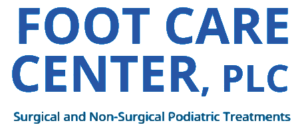CASCADE® Autologous Platelet System
 Interest in fibrin clot techniques and the expanded application of growth factors in soft tissue and bone repair have led to the development of the CASCADE® Autologous Platelet System. Cascade employs platelets and their associated growth factors for clinical applications that require rapid healing and tissue regeneration. The Cascade system represents An Evolution In Platelet Therapy, producing PRFM that can be delivered arthroscopically and sutured into a repair site to stimulate a healing response. The PRFM implant represents a potentially more precise technique to deliver a more concentrated and volume stable fibrin matrix rich in platelets. Growth factors within the PRFM remain functionally viable throughout the Cascade process and are continually released over seven days.
Interest in fibrin clot techniques and the expanded application of growth factors in soft tissue and bone repair have led to the development of the CASCADE® Autologous Platelet System. Cascade employs platelets and their associated growth factors for clinical applications that require rapid healing and tissue regeneration. The Cascade system represents An Evolution In Platelet Therapy, producing PRFM that can be delivered arthroscopically and sutured into a repair site to stimulate a healing response. The PRFM implant represents a potentially more precise technique to deliver a more concentrated and volume stable fibrin matrix rich in platelets. Growth factors within the PRFM remain functionally viable throughout the Cascade process and are continually released over seven days.
Process For Recovering Platelet-Rich Plasma
A very small amount of blood is drawn from the patient into a sterile tube in the exact same manner as a standard blood sample. The tube containing a patient’s blood is placed into a centrifuge and spun to separate the platelets from the other blood components. After a few minutes, the concentrated platelets are removed from the same tube and re-introduced into the patient at the site of the injury. Using a sterile needle, your physician will inject the PRP in and around the injury site. This is all accomplished without using any animal products or other foreign material.
What ot Expect
Patients who are interested in exploring non-surgical treatment options before resorting to surgery may want to consider Platelet-Rich Plasma (PRP). Traditional non-surgical interventions include: Corticosteroid (“cortisone”) injections, oral anti-inflammatory medications, exercise and bracing. In many cases these modalities may not cure the condition, whereupon PRP may potentially be of great benefit. Before you can be considered a candidate for PRP, a complete examination must be performed by your treating physician. This will include a physical examination and diagnostic evaluation. Prior to treatment, you may be asked to refrain from taking non-steroidal antiinflammatory drugs (NSAIDS) for a week. Following the PRP treatment, some localized soreness may occur, which is typical of any injection. This can be addressed with ice, heat, or elevation as well as with acetaminophen. Physical therapy may be prescribed.

